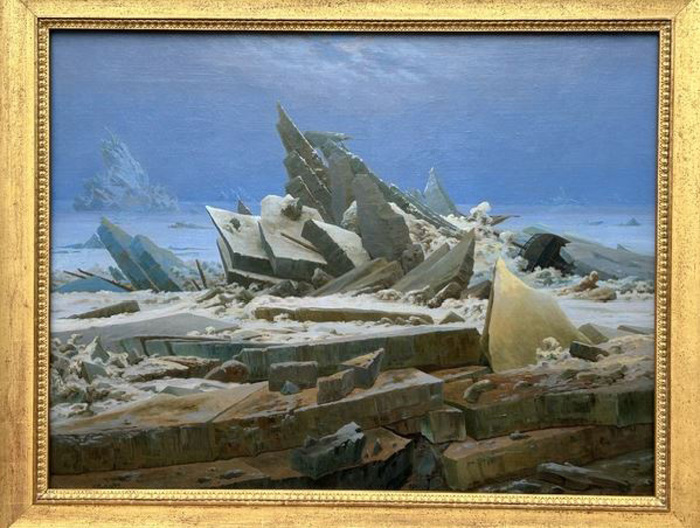BERLIN - The human figure taken from behind invites the viewer to immerse their gaze in nature together. It is the unmistakable pose of the works of Caspar David Friedrich, one of the most profound interpreters of the German soul, celebrated in Berlin with a monographic exhibition for the 250th anniversary of his birth. On Museum Island, in the Alte Nationalgalerie, Unendliche Landschaften, Infinite Landscapes, one of the three main events of this important birthday, was presented to the press, together with the exhibitions in Hamburg and Dresden. But Friedrich will also be celebrated overseas, at the Metropolitan in New York.
Forgotten for decades after his death, exploited by National Socialism, the romantic Friedrich (1774-1840), who lived at the time of the Napoleonic wars and was a patriot, was rediscovered in the German capital, and the National Gallery relaunched him with an exhibition that history in 1906.
Today, in the same place, the public will be able to discover, from 19 April to 4 August, new perspectives on his production, with 60 paintings and 50 drawings from Germany and abroad.
"In the canvases we not only find images of nature, but the vision of great philosophical questions of existence. We must prepare on an emotional level, but this exhibition must also be approached on a thought level", explained the director of the Nationalgalerie Ralph Gleis, presenting the "complex" exhibition, in which "historical research and research into pictorial technique proceed hand in hand". And some questions, raised since the early 1900s, pepper an ever-open debate: is he only a German painter? There are those who have replied that the value of the works makes him a "universal artist", yet Germany's Turner is not always well known outside his country. "Was he a truly romantic painter? Or was there already a trace of something much more modern in immortalizing humanity's solitude in nature, in an increasingly fragmented society?", said Markus Hilgert, general secretary of the Foundation of Laender Culture. "Unlike Turner, his contemporary, who illustrated nature always in strong movement, there is here a stillness capable of conveying the greatness of divine creation. There is a silent sound that moves us deeply in Friedrich's works", he director Gleis added to ANSA. "And this contemplative moment, this nostalgia for nature, in the face of a world that is transforming ever faster, is the discovery of that positive energy that comes from contact with it. The same one we look for today, when we leave the cities to rediscover ourselves. Friedrich lived this before us." Mountains, gorges, ravines, forests. The coast: rocks and cliffs, the blinding white ones of Ruegen, the pearl of the Baltic, are very famous. Trees and plants. The exhibition of "infinite landscapes" is not chronological and proceeds thematically. An interesting focus is dedicated to the colours: green, ochre, "light English red", "dark English red", "burnt sienna", you can read in a shop window, "ultra marine blue", "Prussian blue", but the the Frederician shade par excellence is cobalt blue. Friedrich's best-known masterpiece, "The Wanderer on the Sea of Fog", which remained in Hamburg, is missing from the theaters. But the "sea of ice", painted in 1824, with its colossal melting sheets, and the almost divine presence of the "der Watzmann" massif, from 1825, compensate for the absence: capable of a warning perfectly in tune with the times , today more than ever, 200 years later. In the background the speakers of the introduction have one of the "pairs of canvases" on display: the most prestigious: "The monk by the sea" and "Abbey in the oak forest"."They are iconic images for the collective memory - is Hilgert's conclusion - it is almost a sacrilege to turn our backs on them".

